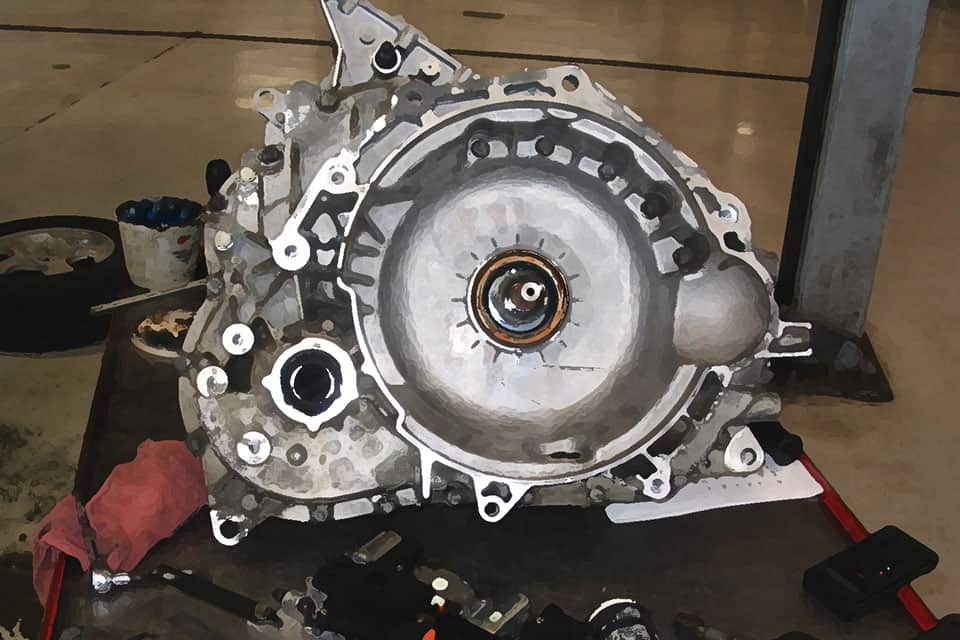How GM's CVT Experiment Failed on Ion and Vue Owners

The VTi CVT made its debut in the 2003 Saturn Ion and 2002 Saturn Vue. It was GM's first attempt at high-volume production of a CVT to be used in all-wheel drive vehicle. The goal was to increase fuel economy by as much as 8%. Because CVTs were notorious for belt problems, GM said they tested the transmission for 100,000 miles. Maybe they should have tested it for longer.
Why a CVT? ∞
CVTs are a tool used by manufacturers in the ongoing battle to squeeze out a few extra MPGs, and give them an advantage over the competition.
CVTs generally change gears through the use of a belt (or chain) that runs through a series of moving pulleys. Because of how it's designed, a CVT has an infinite number of gear ratios that constantly change unlike a traditional transmission that has a fixed number of gear ratios. The goal here is to use the CVT to closely match the engine’s output to the car’s speed, thus having the engine operate closer to optimum efficiency and improve fuel economy.
CVT Failure Reports ∞
It didn't take long for durability concerns of the CVT's steel belt to pop up[1]. GM halted production of the VTi in January, 2004 and also stopped building the Ion and Vue. Debbie Frakes, a GM spokeswoman at the time, said they were worried about a small percentage of vehicles:
"In the field, we have seen very limited instances of belt failure, but we don't know if the causes of those belt failures are related to the condition we discovered in the tests"
But as time passed it became clear that the problem was not limited to just a few of the transmissions.On CarComplaints.com, 2003 Ion owners started complaining about the transmission slipping while 2004 owners said the VTi failed entirely.
"I bought 2004 Saturn Ion in February, 2011. It had 114,000 miles, drove car very little, while making a left turn into my subdivision, transmission slipped out of gear as I was making left turn I applied the gas and transmission changed gears reved up several rpms car became difficult to steer and I lost control of my car and hit the concrete wall!'
-- bcooper220, Sun City, CA
An Extended VTi Warranty ∞
Due to increasing concerns about the VTi, GM extended the warranty on all 2002-2004 Saturn models with the VTi to 5 years / 75,000 miles[2], but that didn't go far enough. The average reported mileage at failure was around 100,000 miles, but even those lucky enough to have their transmissions replaced under the warranty's terms said it didn't matter:
"This is exactly what happened to us. Our transmission has failed each time with no power at all. We are on our 3rd tranny. I bought it used with 66,000km (41,000 miles). The first original tranny went at 75,000 km (46,600 miles) under manufacture's warranty, thank god. We just replaced it just on feb 24th 2011 at 112 879km (70,140 miles) and we had to pay half price due to the lawsuit (over $2,500).
-- Melissa B., Abbotsford, B.C
The Class-Action Lawsuit ∞
General Motors eventually settled a class-action lawsuit brought by the owners of more thank 90,000 Saturn Ion and Vue vehicles equipped with the VTi transmission. The percentage of the settlement each owner received depended on the number of miles they had when their transmission failed. The period to sign up to receive a settlement payment has since passed.
GM discontinued the VTi CVT in 2005. Surprise, surprise.
Source: SaturnFans.com ↩︎
Source: MotorTrend.com ↩︎
Generations Where This Problem Has Been Reported
This problem has popped up in the following Saturn generations.
Most years within a generation share the same parts and manufacturing process. You can also expect them to share the same problems. So while it may not be a problem in every year yet, it's worth looking out for.
